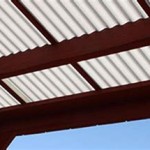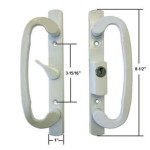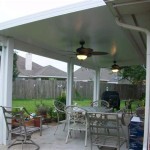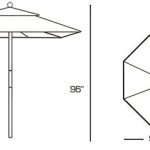How To Enhance the Appearance of an Aging Concrete Patio
A concrete patio, once a pristine outdoor living space, can gradually succumb to the effects of weather, usage, and time. Cracks, stains, and general wear and tear can diminish its aesthetic appeal, making it an eyesore rather than an inviting area for relaxation and entertainment. However, with careful planning and execution, an old concrete patio can be transformed into a revitalized and attractive feature of your property. Several methods exist to improve the appearance of an aging concrete patio, ranging from simple cleaning and repair to more elaborate resurfacing and decorative techniques. The most appropriate approach depends on the existing condition of the concrete, the desired aesthetic outcome, and the budget allocated for the project.
Before embarking on any renovation efforts, a thorough assessment of the patio's condition is crucial. This involves identifying the extent of the damage, the types of stains present, and the structural integrity of the concrete slab. Addressing underlying issues, such as poor drainage or soil settlement, is paramount to prevent further deterioration and ensure the longevity of any cosmetic improvements.
Cleaning and Repairing the Existing Concrete Surface
The first step in rejuvenating an old concrete patio often involves a comprehensive cleaning. Over time, concrete can accumulate dirt, mildew, algae, and various other stains. A pressure washer can be an effective tool for removing surface grime. However, caution is advised, as excessive pressure can damage the concrete, especially if it's already weakened or has existing cracks. A gentler approach using a scrub brush and a specialized concrete cleaner might be preferable for older or more delicate surfaces.
Several types of concrete cleaners are available, each designed to address specific types of stains. For mildew and algae, a solution containing bleach or a commercial mildew remover can be used. Oil stains can be treated with degreasers or specialized concrete stain removers. Stubborn stains may require multiple applications and scrubbing to achieve satisfactory results. After cleaning, the patio should be thoroughly rinsed to remove any remaining cleaner residue.
Once the patio is clean, attention should be turned to repairing any cracks or damage. Small cracks can often be filled with a concrete crack filler or patching compound. These products are typically applied with a putty knife or trowel and allowed to dry according to the manufacturer's instructions. Larger cracks or areas of significant damage may require more extensive repairs, such as patching with new concrete. It's important to properly prepare the area before applying the patching material. This includes cleaning the area thoroughly, removing any loose debris, and applying a concrete bonding agent to ensure a strong adhesion.
For areas where the concrete has chipped or spalled (flaked off), a concrete resurfacing compound can be used to create a smooth, even surface. These compounds are typically cement-based and are applied over the existing concrete layer. Before applying the resurfacing compound, the existing concrete should be thoroughly cleaned and primed with a bonding agent. Multiple thin coats of the compound may be needed to achieve the desired thickness and smoothness. Once the compound has dried, it can be sealed to protect it from moisture and further damage.
Resurfacing and Enhancing the Concrete's Appearance
If the existing concrete patio is severely damaged or if a more dramatic transformation is desired, resurfacing might be the most suitable option. Resurfacing involves applying a new layer of concrete or a concrete-based overlay to the existing surface. This can effectively cover up cracks, stains, and other imperfections, while also providing an opportunity to add decorative elements.
Several types of concrete overlays are available, each with its own unique properties and aesthetic characteristics. Polymer-modified overlays are a popular choice due to their durability, flexibility, and resistance to cracking. These overlays can be applied in a variety of textures and colors, allowing for a wide range of design possibilities. Stamped concrete overlays can mimic the look of brick, stone, or other materials, providing a cost-effective way to achieve a high-end look. Self-leveling overlays can be used to create a perfectly smooth and level surface, which is ideal for certain types of flooring or decorative finishes.
The application of a concrete overlay typically involves several steps. First, the existing concrete surface must be thoroughly cleaned and prepared. This includes removing any loose debris, patching any cracks or damage, and applying a concrete bonding agent. The overlay material is then mixed according to the manufacturer's instructions and applied to the surface using a trowel, squeegee, or other appropriate tool. The overlay can be textured or stamped before it dries to create the desired aesthetic effect. Once the overlay has dried, it should be sealed to protect it from moisture and wear.
Another option for enhancing the appearance of a concrete patio is to stain or dye the concrete. Concrete stains and dyes penetrate the concrete surface, creating a permanent color that won't peel or flake. Stains are typically acid-based and react with the concrete to create a mottled, variegated appearance. Dyes are typically water-based or solvent-based and provide a more uniform color. Both stains and dyes are available in a wide range of colors, allowing for customization to suit any design aesthetic. The application of concrete stain or dye typically involves cleaning the concrete surface, applying the stain or dye according to the manufacturer's instructions, and sealing the surface to protect the color.
Adding Decorative Elements and Finishing Touches
Beyond cleaning, repairing, and resurfacing, several other decorative elements can be incorporated to enhance the overall appearance of an old concrete patio. These elements can add visual interest, functionality, and personality to the space.
One popular option is to add a border or edging to the patio. This can be achieved using pavers, bricks, or other decorative materials. A border can help to define the patio space, create a more polished look, and prevent weeds from growing along the edges. The installation of a border typically involves excavating a trench around the perimeter of the patio, laying a base of gravel, and setting the pavers or bricks in mortar or sand.
Another way to add visual interest is to incorporate decorative elements into the concrete surface itself. This can be achieved through techniques such as stenciling, engraving, or adding decorative aggregates. Stenciling involves using a stencil to create a pattern or design on the concrete surface, which is then filled in with paint or stain. Engraving involves using a specialized tool to carve a design into the concrete surface. Adding decorative aggregates, such as colored glass, pebbles, or seashells, can create a unique and textured look.
The addition of outdoor furniture, planters, and lighting can also significantly enhance the appearance of a concrete patio. Comfortable seating, such as chairs, sofas, and benches, can make the patio a more inviting space for relaxation and entertaining. Planters filled with colorful flowers and greenery can add a touch of nature and create a more vibrant atmosphere. Outdoor lighting, such as string lights, lanterns, or spotlights, can create a warm and inviting ambiance in the evening.
Finally, sealing the concrete patio is an important step in protecting it from moisture, stains, and wear. A concrete sealer creates a protective barrier that prevents water from penetrating the concrete, which can cause cracks and damage. Sealers also help to prevent stains from penetrating the concrete, making it easier to clean. Several types of concrete sealers are available, each with its own properties and characteristics. Acrylic sealers are a popular choice for their affordability and ease of application. Epoxy sealers are more durable and resistant to chemicals, but they are also more expensive and difficult to apply. Penetrating sealers penetrate the concrete surface and create a hydrophobic barrier, which repels water but allows the concrete to breathe. The choice of sealer depends on the specific needs and preferences of the homeowner.
The transformation of an old concrete patio into a beautiful and functional outdoor living space requires careful planning, execution, and attention to detail. By addressing any underlying structural issues, thoroughly cleaning and repairing the surface, and incorporating decorative elements and a protective sealer, a concrete patio can be revitalized and enjoyed for years to come.

Resurfacing A Concrete Patio For Budget Diy Makeover Fab Everyday

Diy Concrete Patio Makeover The Frugal South

Concrete Patio Ideas To Dress Up A Drab Space Bob Vila

3 Concrete Resurfacing Options For Patio

How I Made My Patio Look New Again With Olympic Rescue It

Inexpensive Ways To Cover A Concrete Patio

How To Create Faux Tile Look On Concrete Patio Southern Hospitality

Concrete Patio Ideas To Dress Up A Drab Space Bob Vila

How To Create Faux Tile Look On Concrete Patio Southern Hospitality

Backyard Makeover How To Paint Concrete Look Like Oversize Pavers A House Full Of Sunshine








